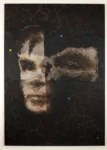Like many other commentators on such things, I often criticize publishing figures who proudly claim they provide a full picture of the state of the industry while not including statistics for self-published titles. So, of course, I welcome the publication of figures that double down on self-published titles.

ALLi News Editor, Dan Holloway
Of course, the picture is still incomplete because Bowker’s stats look only at titles with ISBNs, which rules out many indie titles, most notably those published on KDP (which the Written Word Media survey I reported on recently emphasized is still overwhelmingly where we make our money).
Self-Publishing Outpaces Traditional Publishing
But the figures still tell a story. In 2023, 2.6 million indie titles had ISBNs, up 7.2 percent from 2022. This contrasts with a 3.6 percent drop in traditionally published titles to just over half a million. (That comparison alone is interesting: indies are publishing five times more than traditional publishers, and that’s before we account for titles without ISBNs.) Publishers Weekly’s piece on the stats, which includes interesting insights from Draft2Digital and Smashwords, attributes this increase to the growing ease of publishing with an ISBN through distribution platforms and the increasing legitimacy—both in reality and in perception—of such platforms, compared to the days when self-publishing in print often meant using vanity presses.

A.I. God
AI’s Expanding Presence in the Art World
Meanwhile, in AI news, we follow up on last week’s Beatles at the Grammys story with a first from the art world. Sotheby’s digital art sale last week saw what the BBC reports as the first auction sale of a piece of art by a humanoid robot. The painting, called AI God, is a portrait of the father of artificial intelligence, Alan Turing. It fetched over a million dollars. All it needs now is for someone to offer an NFT, and we’ll have come full circle.




